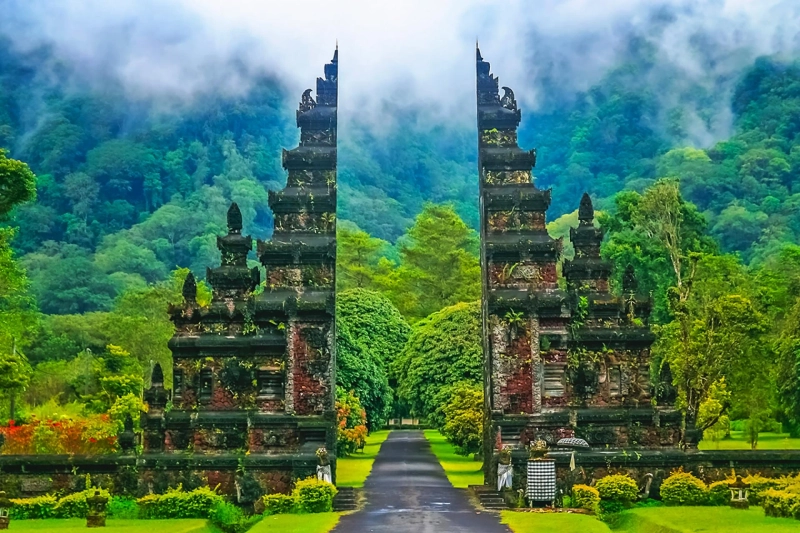Introduction to Balinese Temples and Yoga Connection
Bali, often referred to as the "Island of the Gods," is renowned for its rich cultural heritage, spiritual traditions, and breathtaking temples. These iconic structures are not just architectural marvels; they hold profound spiritual significance, making them ideal spaces for enhancing yoga practices. The unique fusion of Hindu-Balinese traditions and serene natural settings creates an atmosphere conducive to mindfulness and inner harmony.
Yoga practitioners from around the world are drawn to Bali, not just for its scenic beauty but for the transformative experiences offered through ceremonies and rituals held in the island's sacred temples. In this article, we delve into the integral role Balinese temples and ceremonies play in deepening yoga practices.
The Spiritual Essence of Balinese Temples
A Sanctuary for Mindfulness and Reflection
Balinese temples, or pura, are deeply intertwined with the spiritual fabric of the island. These temples are designed as gateways to divine energies, surrounded by lush greenery and vibrant flora. Their serene ambiance fosters introspection and mindfulness, which are key elements of yoga practice.
Yoga sessions conducted in or near temples often integrate the calm, meditative environment of these sacred spaces, allowing practitioners to connect with their inner selves more profoundly. The intricate carvings, the chanting of mantras, and the smell of incense combine to create a holistic sensory experience that complements yoga's meditative aspects.
Symbolism and Sacred Geometry in Temple Architecture
The layout of Balinese temples often reflects sacred geometry, aligning with cosmic principles. The tri-mandala concept, which divides the temple into three parts—nista mandala (outer sanctum), madya mandala (middle sanctum), and utama mandala (innermost sanctum)—mirrors the yogic journey of moving from external distractions to inner peace.
Practicing yoga in these temples helps practitioners align their physical postures with the spiritual energy of the place, enhancing the overall impact of their practice.
The Role of Ceremonies in Elevating Yoga Practice
Connecting with Balinese Rituals
Ceremonies are an integral aspect of Balinese spiritual life. Events such as Odalan (temple anniversaries), Melukat (purification rituals), and Nyepi (the Day of Silence) provide unique opportunities for yoga practitioners to engage deeply with their spiritual journey.
During these rituals, offerings are made to the gods, symbolizing gratitude and the release of negative energies. Participating in such ceremonies can amplify the mindfulness aspect of yoga, helping practitioners develop a sense of unity with the universe.
Melukat: Purification Through Sacred Waters
The purification ritual, Melukat, involves bathing in sacred springs, which are believed to cleanse both the body and soul. Temples like Tirta Empul, renowned for their holy water, serve as sanctuaries for this ceremony. Practicing yoga after participating in a Melukat ceremony allows for an enhanced state of mental clarity and spiritual openness.
Incorporating these rituals into yoga retreats offers a transformative experience, helping individuals shed negative energies and reconnect with their higher selves.
How Balinese Temples Enhance Yoga Retreats
Immersion in Nature and Spiritual Energy
Many yoga retreats in Bali are organized around temples, such as Uluwatu Temple, Besakih Temple, and Tanah Lot. These retreats often include guided meditation, asanas, and breathing exercises, synchronized with temple ceremonies. The tranquil surroundings and the spiritual energy of these temples provide an unmatched environment for self-discovery.
Cultural Education and Spiritual Growth
Yoga retreats in Bali often incorporate lessons about Balinese culture, rituals, and philosophies. Learning about Tri Hita Karana—the Balinese concept of harmony among humans, nature, and the divine—adds depth to the practice, inspiring practitioners to live a balanced life. This holistic approach enriches the yoga journey, making it not just a physical practice but a spiritual awakening.
Practical Tips for Practicing Yoga at Balinese Temples
- Respect the Culture: Always dress modestly and follow temple etiquette. Wear a sarong and sash as a sign of respect.
- Engage with Local Rituals: Join temple ceremonies to enhance your understanding of Balinese spirituality.
- Find a Guide: Partner with a local yoga instructor who can bridge the gap between yoga practices and Balinese traditions.
- Plan Around Rituals: Check the temple's calendar for ceremonies like Odalan to experience the spiritual vibrancy firsthand.
Conclusion: Merging Spirituality and Yoga in Bali
Balinese temples and ceremonies serve as profound catalysts for spiritual growth and mindfulness in yoga practice. By immersing oneself in the sacred rituals, architecture, and spiritual essence of these temples, yoga practitioners can experience a deeper connection to their inner selves and the universe.
Bali's harmonious blend of natural beauty, spiritual energy, and cultural richness makes it a sanctuary for yoga enthusiasts seeking both personal and spiritual transformation.


